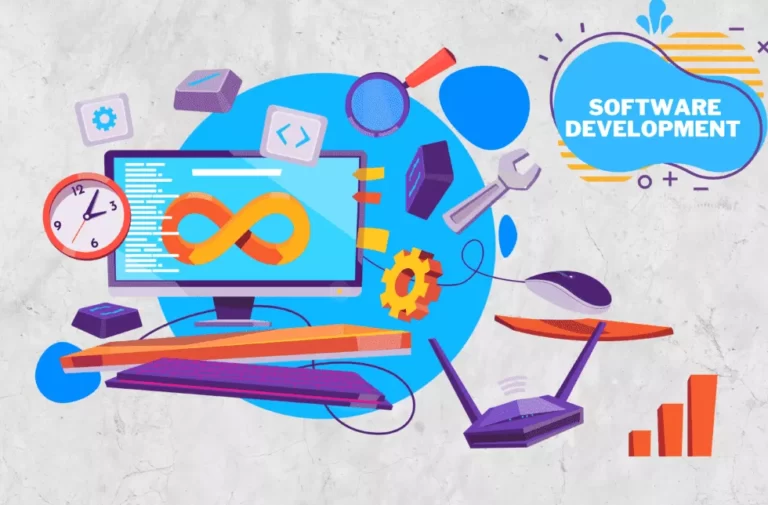OKRs and Tasks Management in Software Development:

OKRs can help software development teams prioritize and track progress on features and bug fixes, measure and improve engineering efficiency, and ensure that the development process aligns with overall business objectives.
Atlassian, a leading provider of collaboration and productivity tools for software development teams, uses OKRs to drive development efficiency and alignment with its overall business strategy. The company sets annual, quarterly, and team-level OKRs focused on specific, measurable goals that support its mission of “helping teams everywhere work better together”.
For example, one of Atlassian’s objectives might be to
- “Accelerate the Development of Jira Software”.
The associated key results might include:
- Increase the number of Jira Software customers by 20% by the end of the year.
- Achieve a 90% customer satisfaction score for Jira Software support services.
- Launch 3 new Jira Software features by the end of Q2
And tasks can be linked with each key result:
For example –
- Launch 3 new Jira Software features by the end of Q2
The Associated tasks for the above key result can be:
- Conduct market research and user interviews to gather insights on the most requested or needed features for Jira Software.
- Define the scope and requirements for each new feature, including any technical and design specifications.
- Allocate resources and assign team members to each feature development project.
- Set up a project plan and timeline for each feature, including milestones and deadlines.
- Regularly track progress and review the project plan to ensure that each feature is on track to be launched by the end of Q2.
- Collaborate with the product design team to create wireframes and prototypes for each feature.
- Conduct internal and external testing of each feature to ensure it meets quality standards and user needs.
- Prepare a launch plan for each feature, including communication and marketing materials.
- Coordinate with cross-functional teams, such as customer support and technical writing, to ensure all necessary resources are in place for the launch.
- Monitor the usage and feedback of each feature after launch and make any necessary updates or improvements.
- Increase the number of Jira Software customers by 20% by the end of the year.
The Associated tasks for the above key result can be:
- Analyze the current customer base to identify target segments and growth opportunities.
- Develop a comprehensive customer acquisition and retention strategy.
- Identify and prioritize marketing and sales channels that are most effective for reaching and converting target customers.
- Develop and implement targeted marketing campaigns, such as email and social media, to drive awareness and interest in Jira Software.
- Enhance the Jira Software website and product pages to showcase the software’s benefits and features.
- Optimize the pricing and packaging of Jira Software to make it more appealing to target customers.
- Provide customer training and support resources to ensure that new customers are successful and satisfied with the software.
- Collaborate with partners, such as consultants and integrators, to reach new customers and increase sales.
- Track and measure the effectiveness of customer acquisition and retention activities and adjust as needed.
- Regularly gather customer feedback and incorporate it into product and marketing plans to continually improve the customer experience.
- Achieve a 90% customer satisfaction score for Jira Software support services.
The Associated tasks for the above key result can be:
- Define clear and consistent standards for customer support, including response times and quality of service.
- Train support staff on the latest product features, troubleshooting techniques, and customer service best practices.
- Provide customers with multiple channels for seeking support, such as email, phone, and chat.
- Implement a system for tracking and resolving customer support issues, such as a ticketing system or helpdesk software.
- Regularly monitor and evaluate customer feedback on support services and use it to identify areas for improvement.
- Implement a quality assurance program to regularly review and evaluate the quality of customer support interactions.
- Provide incentives and recognition programs to motivate and reward support staff for delivering excellent customer service.
- Continuously improve and update the knowledge base and support resources available to customers.
- Collaborate with product teams to address any underlying issues with the product that are causing customer support issues.
- Set up regular surveys to measure customer satisfaction with support services and track progress towards the 90% goal.
By regularly tracking progress towards these key results and linked tasks, Atlassian can ensure that its efforts to accelerate the development of Jira Software are aligned with its overall objective and business strategy.
Conclusion:
We at Vizual offer a stunning Enterprise SaaS-based online dedicated tool called ‘VizualPro Suite’. VizualPro Suite is one of the best OKR tracking software. VizualPro Suite also offers Task Automation and Employee Performance Management capabilities.
The suite helps set, communicate, track, and measure Objectives and key results within businesses using OKRs and Task Automation. OKR principles can be easily implemented and tracked using VizualPro Suite. Our team of specialists created the VizualPro Suite solution using the “Design Thinking” process to produce the best results for task management and Strategic Future.
Interested in a free demo of the best OKR tracking software? Visit http://vizualplatform.com/.
Join Our Newsletter
